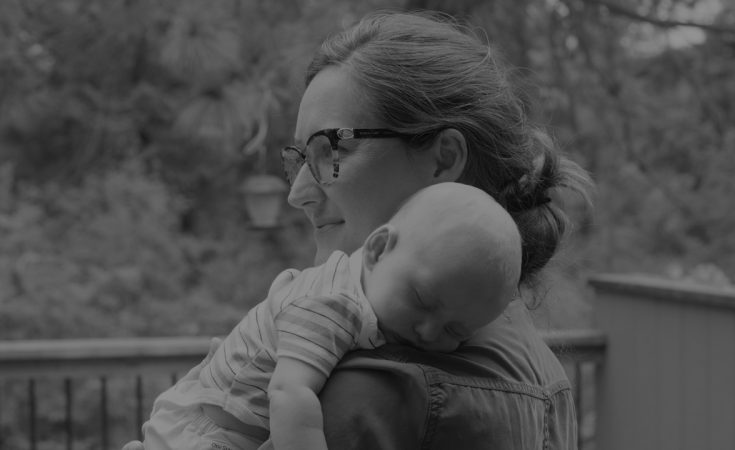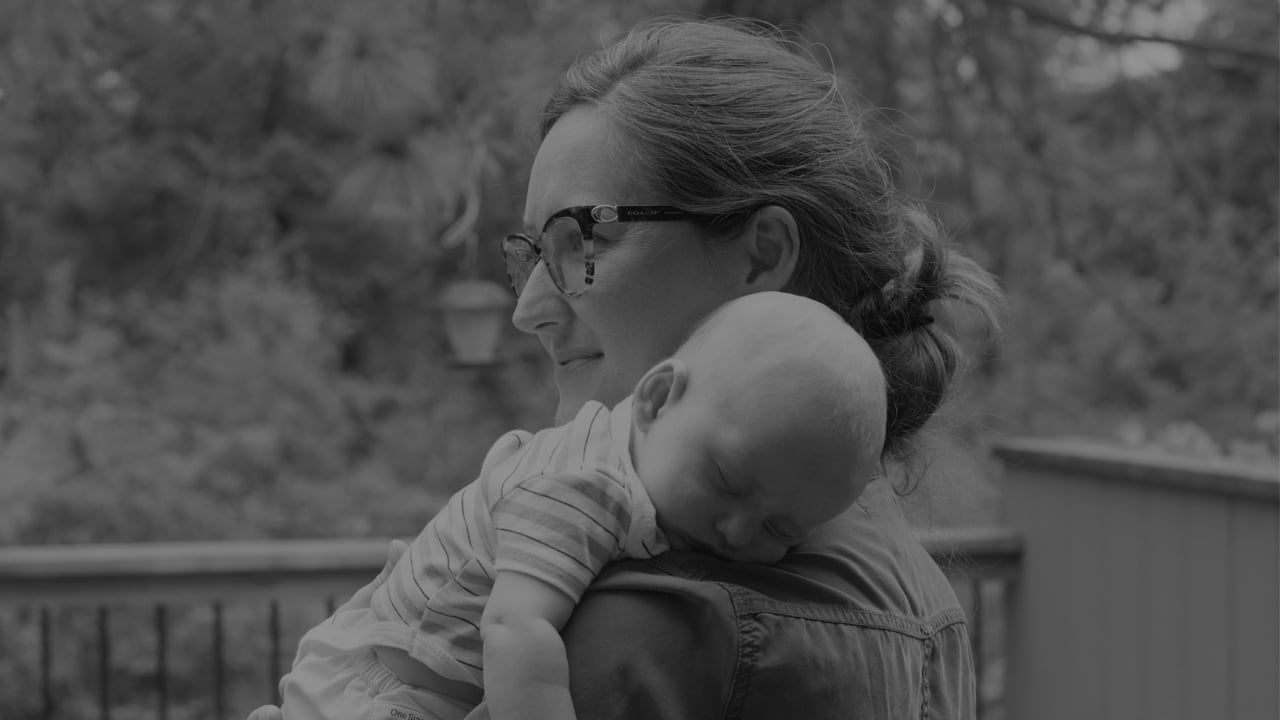Six weeks after the birth of my first son, I lay on the exam table in my midwife’s cozy office for my final six-week postpartum check-up.
“This might sound odd,” I said, glancing at a boob-shaped ceramic mug sitting on the shelf, while Laura, my midwife, gave me a pap test. “But I’m really going to miss you.”
Laura had been with me through nine months of pregnancy, 36 hours of labour, and a terrifying trip to emergency when my son was just three weeks old. Her guidance to follow my intuition that night likely saved his life. Saying goodbye was going to be tough—really tough.
Laura nodded. “A lot of women say it feels like going through a break-up.”
It was true. Earlier, as I sat in the waiting room, I was already dreading the inevitable farewell. Aside from a few Canadian provinces and territories, midwives provide care for women during pregnancy, delivery and up to six-to-eight weeks postpartum—and it’s all completely free. (In Prince Edward Island, midwifery is still unregulated, and in places like the Yukon, there are access issues.) After that, midwives are forced to “break-up” with their patients and mothers are shuffled to public health clinics, paediatricians or family doctors (if they have one) for their baby’s check-ups. It’s not a bad system, and many women may prefer it, but in my circle of moms, we all agree: waving goodbye to our midwives was devastating.
I thought back to my first midwife appointment. I was jittery with the awe and excitement of carrying my first child, but I was also nervous; fearful of everything that could go wrong, with the potential for heartache and loss. Having gone through some personal health issues before, I had a habit of dreading doctor’s appointments and anticipating bad news before I even walked through the door.
But this felt different. Instead of telling me how my labour and delivery would go, Laura asked me what I wanted. I felt free—in a way I hadn’t ever in any other medical setting—to take an active role in my own health. It felt like a partnership and a collaboration as we prepared to welcome my son into the world. Perhaps that’s one of the reasons I now had that glum, down-in-the-dumps break-up feeling. We had shared in the delightful sound of my baby’s heartbeat roaring up through the fetal stethoscope like the starting of a peppy lawnmower. Due to COVID restrictions, not even my husband could be present for those special moments.
Laura delivered my son at the local hospital on March 26, the day before my birthday. We all rejoiced in this wonderful birthday gift. The following day, she knocked softly on our hospital room door. She was back to do our Day One visit and give us the all clear to head home. After the seemingly endless stream of nurses and lactation consultants coming and going over the past 24 hours, it was nice to see a familiar face. She insisted that we call or text any time before our next visit, which would be at our home, on day three. (Unlike obstetricians, midwives will come to your home to complete all the necessary checks on mom and baby for the first week.) In the days that followed, as my husband and I fumbled through the brain fog of scattered sleep and parental paranoia, we contacted her many times. On the third day, my exhausted husband and I both accidentally fell asleep waiting for Laura to arrive at our home. I was still in my PJs in bed when Laura came in. We did the entire check-up in our bedroom; I didn’t even have to get out from under the covers. At three days postpartum, this was the greatest gift. During the visit, Laura reached out and propped a pillow under my arm while I was breastfeeding; a small adjustment that made a world of difference for my aching shoulders. You couldn’t recreate that intimate moment in a doctor’s exam room.
Our midwives are present for one of the absolute greatest and most intense moments of our lives. Who wouldn’t feel a deep bond with the person who brought your baby into the world and placed him in your arms? For me, my midwife was there for both the greatest, and the worst, moments of my life.
It was late in the evening, about three weeks after our son was born, when we realized something was wrong. Even in our panic, we felt bad calling so late, but Laura insisted it wasn’t a bother.
“The baby’s heart seems to be beating really fast,” I said, my own voice quickening.
I had noticed it when I placed my palm on his chest. His heart felt like it was trying to beat right out of his tiny body.
Laura calmly told me to listen to my motherly instincts and get him checked out in the emergency room. At the very least, we’d get some peace of mind.
A few hours later we received the worst news; everything was not fine. Our little one had a relatively rare heart condition called supraventricular tachycardia (SVT) and required urgent medical intervention, including an airlift to the nearest children’s hospital. Left untreated, the condition can be fatal.
We saw a lot of doctors and nurses and pharmacists in the weeks that followed. We got an amazing paediatrician. But Laura was there from the start. She knew our whole story.
At that final check-up, I joked that if I didn’t want to say goodbye, I’d just have to get pregnant again. I wanted to keep her forever. There had to be a better way, I thought. What if we didn’t have to say goodbye?
Turns out, most midwives don’t want to break up either.
As Laura finished up my exam, she told me about all the other services midwives could provide if the government let them: pap tests for all women, IUD insertions, contraceptive advice, thyroid treatment, first trimester abortions, breast exams, pre-conception advice, and baby check-ups for a year or more. She described this as “well women and well baby care,” and it sounded amazing.
Midwives can’t do all those things—not yet. Government legislation at the provincial level tightly controls what services midwives can provide, and for the most part, that only includes care during pregnancy and the immediate postpartum period, says Alix Bacon, president of the Canadian Midwives Association. There are small pockets of progress around the country; a pilot project in B.C. where midwives are inserting IUDs, and, in Ontario, a creative approach that allows midwives to perform abortion services under the delegation of a physician. And Indigenous midwives have always cared for women and their families in a much broader scope, Bacon says.
But on the whole, most midwives in Canada have their hands tied when it comes to providing services beyond pregnancy and eight weeks postpartum. For that to change, governments would have to rewrite the laws that govern midwifery. The association has been recommending such changes for years. Back in 2015, it released a position statement advocating for reproductive health care services, including access to family planning services, information and contraception supplies, STI prevention and treatment, quality maternity care and safe abortion.
I wish we weren’t still waiting. It’s such a missed opportunity for quality access to women’s health care, especially when lengthy waiting lists and other access to service issues make it difficult to obtain a family doctor. Of course midwives can’t handle every women’s health concern—they don’t go to medical school—but they do study for four years to get a bachelor’s degree in midwifery, and then must pass a national skills and abilities exam. When it comes to routine gynecological care and reproductive health, midwives are qualified to fill an urgent gap in service. Imagine applying everything wonderful about midwifery care—that trusting relationship, the intimacy of those home visits, the empowerment of a working partnership—to the rest of women’s health care?
When I was holding on for dear life through the challenging, stressful and sometimes scary experience of becoming a mother, my midwife was there to keep me grounded. Wouldn’t it make sense to let the relationship between midwives and their patients continue to thrive beyond eight weeks postpartum, and maybe even over the course of a woman’s lifetime? Why not?
As Laura handed me my final discharge papers, I mourned not only the loss of a friend, but of a model of health care that felt instinctively right.
The nature of our relationship meant we’d gotten up close and personal before—you can’t get much closer than a cervical exam or breastfeeding support session—but at that final appointment, we parted with a hug.
“Until the next baby,”I said. “Or maybe sooner.”



































